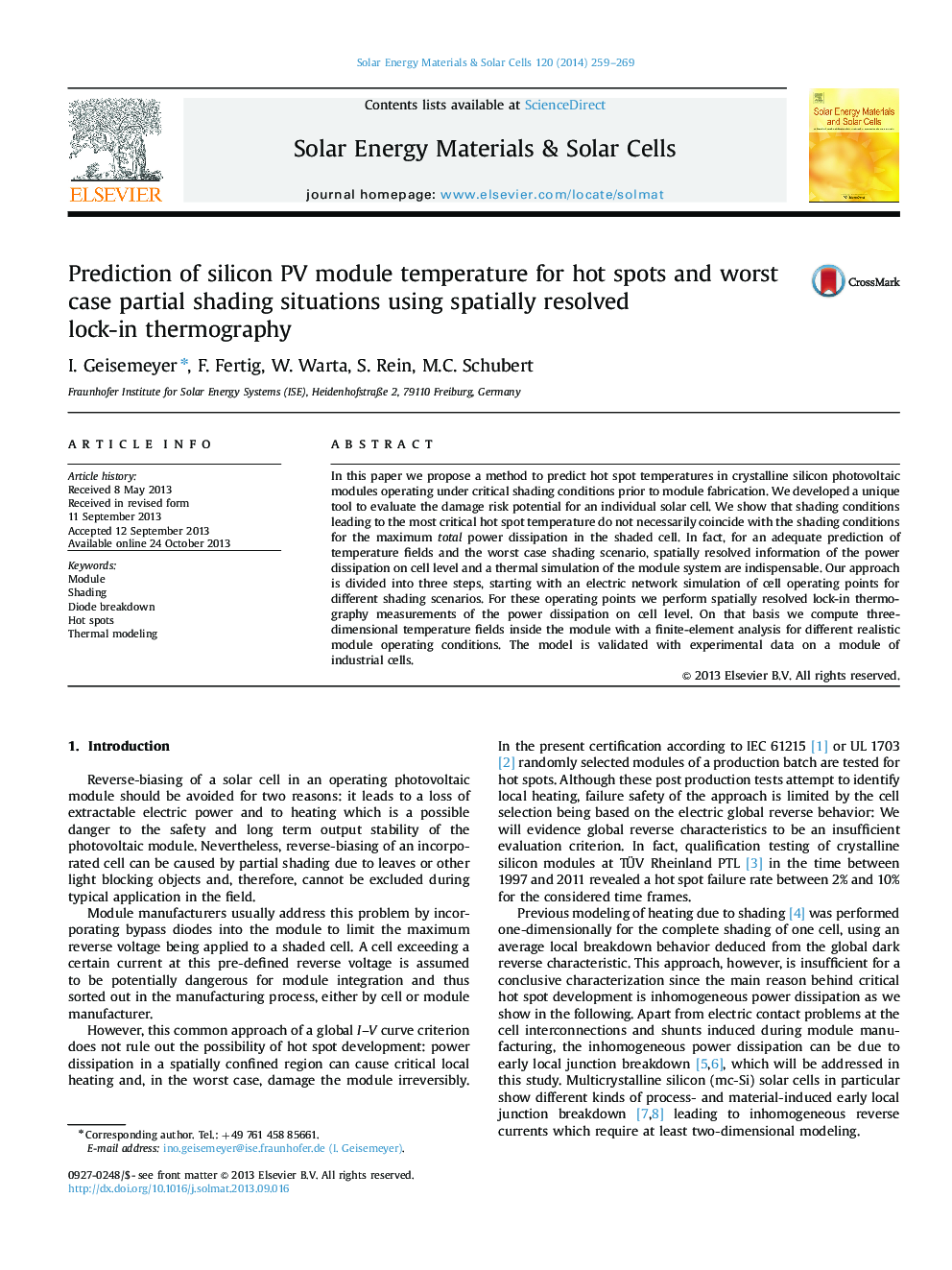| Article ID | Journal | Published Year | Pages | File Type |
|---|---|---|---|---|
| 10248726 | Solar Energy Materials and Solar Cells | 2014 | 11 Pages |
Abstract
In this paper we propose a method to predict hot spot temperatures in crystalline silicon photovoltaic modules operating under critical shading conditions prior to module fabrication. We developed a unique tool to evaluate the damage risk potential for an individual solar cell. We show that shading conditions leading to the most critical hot spot temperature do not necessarily coincide with the shading conditions for the maximum total power dissipation in the shaded cell. In fact, for an adequate prediction of temperature fields and the worst case shading scenario, spatially resolved information of the power dissipation on cell level and a thermal simulation of the module system are indispensable. Our approach is divided into three steps, starting with an electric network simulation of cell operating points for different shading scenarios. For these operating points we perform spatially resolved lock-in thermography measurements of the power dissipation on cell level. On that basis we compute three-dimensional temperature fields inside the module with a finite-element analysis for different realistic module operating conditions. The model is validated with experimental data on a module of industrial cells.
Related Topics
Physical Sciences and Engineering
Chemical Engineering
Catalysis
Authors
I. Geisemeyer, F. Fertig, W. Warta, S. Rein, M.C. Schubert,
